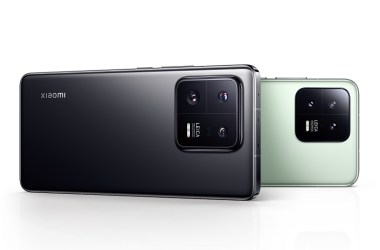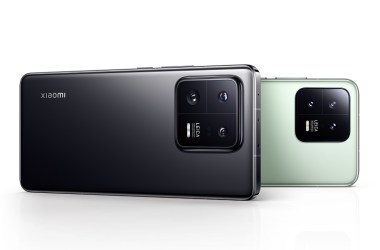Xiaomi’s flagship Xiaomi 13 Series has arrived in Singapore, pairing elegant, minimalistic design with a Leica-co-engineered camera system, high-end hardware, and a focus on mobile photography that aims to deliver pro-grade results. The lineup comprises the Xiaomi 13 and the Xiaomi 13 Pro, each built to offer strong performance, premium displays, and a software experience tuned for photography enthusiasts. Availability in Singapore was set for pre-orders from March 4 to March 10, 2023 across Xiaomi Stores and partner retailers, with color and storage options tailored to local preferences. This launch marks Xiaomi’s continued collaboration with Leica to deliver a distinctive imaging experience, blending Leica optics, computational photography, and Xiaomi’s own imaging engine for a unified flagship experience.
Leica partnership and imaging philosophy
The Xiaomi 13 Series represents a renewed, deeply integrated collaboration with Leica, designed to deliver a brand-new smartphone photography experience for users in Singapore. This partnership is described as a strategic collaboration in imaging technology, with the aim of offering pro-grade camera capability onboard Xiaomi’s flagship devices. The core idea is to fuse Leica’s professional optics with Xiaomi’s imaging software and hardware to create a seamless, authentic photography workflow on a smartphone form factor.
From the outset, the partnership emphasizes the dual goals of achieving superior image quality and preserving an authentic Leica look in smartphone photography. The camera systems on both models are co-engineered with Leica, incorporating Leica-certified lenses, and a software ecosystem that includes distinct photographic styles. Users can opt for Leica Authentic Look or Leica Vibrant Look, which are designed to provide aesthetic options while retaining accurate color rendition and texture, enabling portraits and scenes to convey the intended mood with precise tonality.
In practical terms, the Leica-co-engineered camera experience extends beyond branding. It encompasses hardware choices, such as Leica optics and specialized sensor layouts, along with software features that affect how images are composed, processed, and styled. The UI/UX is tailored to streamline professional-style shooting, with manual controls and presets that align with Leica’s design language. The collaboration also contributes to branding cues such as Leica filters and a distinctive shutter sound, reinforcing the Leica experience while ensuring that images produced with the Xiaomi 13 Series reflect Leica-inspired aesthetics.
The Singapore launch event underscored the depth of this collaboration, with representatives from Xiaomi, Leica, and Qualcomm sharing insights into how the two brands converge on imaging technology. A local Leica ambassador highlighted how the devices enable high-quality photography, illustrating how the camera system works in concert with Leica-inspired features and computational photography to deliver consistent results across lighting conditions. The overall messaging centers on empowering users to achieve professional-looking photographs with a smartphone, backed by a partnership that combines Leica optics, Xiaomi imaging software, and cutting-edge hardware.
Images, optics, and the Leica experience
Both devices in the Xiaomi 13 Series feature triple camera configurations with Leica-branded optics designed to cover a wide range of focal lengths and shooting scenarios. The Pro model, in particular, pushes the envelope with an ultra-large sensor approach and a versatile zoom range, aligning with the brand’s promise of pro-level imaging. The combination of Leica optics, specialized sensor technology, and advanced computational photography creates an ecosystem in which hardware and software work together to deliver high dynamic range, nuanced color, and texture fidelity that storytelling photographers expect.
Leica’s influence is also visible in the inclusion of dedicated photographic styles and filters, along with the Leica watermark and shutter sounds that evoke a classic photography workflow. The intent is to give users a sense of authenticity and heritage while leveraging modern computational capabilities to optimize focus, exposure, and color even in complex light. In short, the partnership seeks to translate Leica’s photographic legacy into practical, user-friendly tools that fit in the palm of a smartphone.
Camera system hardware and sensor architecture
The Xiaomi 13 Pro distinguishes itself with a high-end camera configuration designed to maximize image quality in a smartphone form factor. At the heart of the Pro is a large 1-inch IMX989 sensor paired with Leica-branded optics, delivering a broad dynamic range and rich color rendering. The 1-inch sensor is a defining feature, enabling more light capture and texture detail, particularly in challenging lighting. The main camera on the 13 Pro is a 23mm wide-angle module that leverages this large sensor to produce color-balanced, detail-rich photographs with strong subject separation.
The Pro model employs a sophisticated lens system that includes a 75mm floating telephoto camera. The telephoto design uses an advanced floating lens mechanism to optimize focusing performance, enabling a close minimum focus distance of around 10 centimeters for impressive portraits and macro-like detail in close-up work. The telephoto arrangement supports a focal length that appeals to portraiture and distant detail capture, contributing to a versatile zoom capability across the system.
The ultra-wide camera on the Xiaomi 13 Pro completes the trio, offering a 14mm ultra-wide field of view that expands the creative possibilities for landscapes, interiors, and environmental portraits. The Leica Vario-Summicron branding reflects the high-quality optical engineering applied to the camera array, aligning with the supposed milestones of Leica partnership. Together, these lenses cover a broad spectrum of shooting scenarios, from everyday snapshots to professional-style compositions.
In terms of computational photography, the Xiaomi Imaging Engine powers both devices, delivering enhanced focus, color science, and processing speed. The imaging pipeline includes advanced algorithms for subject tracking, motion understanding, and real-time enhancements, enabling improved performance for still photography and video. The Pro model’s camera system also benefits from high-bit-depth workflows, such as 10-Bit RAW DNG support and Adobe Color Profiles, which facilitate professional-grade post-processing workflows for photographers who rely on post-production to achieve their intended look.
The company notes that both devices offer manual controls in pro-mode, enabling photographers to adjust shooting parameters and leverage the dual Leica-style options to craft images with a particular aesthetic. The camera software supports two distinct Leica modes—Leica Authentic Look and Leica Vibrant Look—preserving color accuracy and tonal fidelity while offering creative saturation and contrast options. The signature Leica filters and watermark further reinforce the Leica-inspired approach to photography on Xiaomi’s flagships.
Video capabilities on both devices are designed for professional videography as well. With the ability to shoot in Dolby Vision, users can capture rich color and high dynamic range video with supported displays. The devices also support 4K video with HyperOIS stabilization to minimize camera shakes in dynamic shooting conditions. The Xiaomi Imaging Engine enhances both photos and videos with computational features that optimize exposure, color, and stabilization in real time, enabling studio-like results in a portable form factor.
The camera user interface is designed to be approachable for enthusiasts while offering knobs and options that mirror a more traditional photography workflow. The incorporation of ProFocus, a subject-tracking technology that aids in maintaining focus on moving subjects, helps preserve sharpness in action shots and dynamic scenes. The combined effect of hardware, optics, and software is intended to deliver consistent, high-quality output across a wide range of scenarios, from handheld street photography to controlled studio settings.
Performance, display technology, and battery architecture
Powering both Xiaomi flagship models is the Snapdragon 8 Gen 2 mobile platform, a processor designed to deliver strong performance in gaming, computational photography, and real-time AI tasks. The newer generation brings noticeable improvements in CPU and GPU efficiency, enabling faster app launches, smoother multitasking, and more capable on-device processing for camera and video tasks. The performance gains translate into responsive app experiences, with faster autofocus, quicker scene recognition, and improved AI-driven features that run in real time.
Xiaomi’s Surge battery management system is also a central component of the flagship experience, designed to maximize battery life and ensure stable performance under heavy workloads. The 13 features a 4,500 mAh battery that provides all-day power with typical use, backed by 67W wired fast charging and 50W wireless charging. The 13 Pro increases capacity to 4,820 mAh and is paired with 120W HyperCharge technology, enabling a claim of being able to reach a full charge very quickly in practical use. This combination aims to reduce downtime and keep users productive and connected.
Connectivity is up to date with the latest wireless standards, including Wi-Fi 7 support via Qualcomm’s FastConnect 7800 Mobile Connectivity System. The Pro model introduces High Band Simultaneous (HBS) multi-link technology, allowing multiple 5GHz and 6GHz connections to operate concurrently for high-speed networks with reduced latency. The standard Xiaomi 13 provides Dual Band Simultaneous (DBS) Multi-Link operation, delivering strong performance on compatible networks. The result is faster, more reliable wireless connectivity for streaming, online gaming, and large data transfers.
Display quality is a critical differentiator for flagships, and both devices in the Xiaomi 13 Series use high-quality OLED panels with excellent color accuracy. The Xiaomi 13 features a 6.36-inch Full HD+ AMOLED display with a high screen-to-body ratio around 93.3% and slender bezels measuring about 1.61 millimeters on the sides, delivering a compact yet immersive viewing experience. The 13’s display supports a high refresh rate and strong color performance, with the E6 material used to optimize brightness and efficiency.
The Xiaomi 13 Pro steps up with a larger 6.73-inch WQHD+ AMOLED display that supports a 120 Hz refresh rate for smooth scrolling and responsive interactions. The combination of the 1,200-nit typical brightness and 1,900-nit peak brightness results in excellent outdoor legibility and vibrant HDR content. The TrueColor display ensures color fidelity, and the device supports Dolby Vision, HDR10+, HLG, and Dolby Atmos for a top-tier audiovisual experience. The hardware and display pairing is intended to provide an immersive multimedia experience for both creators and consumers.
In terms of durability, both devices carry IP68 dust and water resistance, offering a degree of protection for everyday use. The combination of premium materials and careful engineering aims to deliver a durable flagship experience with continued resilience in real-world scenarios.
Design language and materials
The Xiaomi 13 adopts a minimalistic design with a flat screen and flat-edges aesthetic. It uses a back design that emphasizes a clean silhouette and comfortable hold, with a screen-to-body ratio that maximizes display real estate in a compact footprint. The color options for the Xiaomi 13 include Black, White, and Flora Green, allowing users to choose a look that suits their style. The 13 emphasizes a conventional form factor without sacrificing premium tactile feel or ergonomics.
By contrast, the Xiaomi 13 Pro leverages a premium, three-dimensional appearance crafted from ceramic materials, resulting in a more premium aesthetic and tactile experience. The Pro is offered in Ceramic White and Ceramic Black, with the ceramic back providing a refined, glass-like finish that is both aesthetically pleasing and comfortable to hold. The Pro’s design goals align with its size, featuring a larger display and a more prominent camera module that underscores its flagship status.
Both models share premium display technologies and ergonomic considerations, ensuring that content looks vibrant and true to life while remaining comfortable for long-term use. The design approach aims to balance aesthetics with usability, delivering devices that feel premium in the hand yet practical for daily use, photography sessions, and multimedia consumption.
Design, build quality, and user experience
The Xiaomi 13 family emphasizes premium materials and careful industrial design. The standard model’s flat-screen design is complemented by a refined, minimalistic back panel, giving the device a modern, understated look that aligns with contemporary flagship aesthetics. The 93.3% screen-to-body ratio and slim bezels contribute to an expansive display experience for watching videos, editing photos, or reviewing your latest shots in detail.
In terms of build quality, the 13 uses a refined construction that provides comfortable grip and a sturdy overall feel, while the 13 Pro’s ceramic body adds an extra layer of luxury and durability. The ceramic finish helps with heat dissipation and adds a premium tactile sensation, which many users associate with high-end devices. The weight distribution, the curvature of the back, and the overall balance of the devices are designed to deliver a comfortable hold during extended photography sessions, portrait shooting, and daytime or nighttime use.
The camera module, Leica-branded optics, and the overall industrial design convey a strong premium identity. The design choices align with a brand strategy that targets serious photographers and enthusiasts who seek a device capable of delivering professional-like results without the need to carry specialized gear. The combination of design, materials, and engineering quality reflects Xiaomi’s intent to position the 13 Series as a top-tier choice for users who want a flagship experience with a strong emphasis on imaging.
The user experience is complemented by software features aimed at photographers and videographers. The Leica-inspired camera modes, filters, and watermarking options are designed to give users a distinct look while maintaining a fluid and intuitive shooting experience. The ProFeatures and ProMode options support manual control over ISO, shutter speed, white balance, and focus, which makes the devices attractive to users who want to take creative control over their captures.
The overall experience also includes a robust software and services package, with regular updates, a commitment to security and privacy, and ecosystem features designed to integrate with other Xiaomi devices and partner services. The combination of hardware, software, and design elements is intended to deliver a flagship experience that feels cohesive and purpose-built for imaging enthusiasts.
Software, imaging engine, and professional features
Xiaomi positions the Xiaomi 13 Pro and Xiaomi 13 as devices that excel in both photography and videography through an integrated software ecosystem that complements the Leica optics. The Xiaomi Imaging Engine is highlighted as delivering strong computational photography capabilities across both devices, enabling advanced processing for color, texture, and exposure.
The Leica co-engineered camera system supports 10-Bit RAW DNG capture on the Xiaomi 13 Pro, enabling professional-grade post-production workflows in tools like Adobe Photoshop and Adobe Lightroom. The camera app provides pro-mode controls that empower users to adjust parameters such as exposure, white balance, and ISO with a high degree of precision, while the Leica Authentic Look and Leica Vibrant Look options offer stylistic choices that preserve color fidelity while delivering creative saturation.
Video functionality is designed for both amateurs and professionals, enabling content creators to create in Dolby Vision with rich color, contrast, and detail. The devices support 4K video recording and HyperOIS stabilization for smoother footage in high-motion scenarios. The combination of device-level computational photography features, Leica-tuned color science, and a polished user interface aims to deliver professional results in a compact, handheld package.
In addition, the software experience includes post-production reliability and creative options, enabling compatibility with widely used workflows. The ProFocus feature helps maintain focus on moving subjects, while the software’s computational tools optimize exposure and color in real time. The collaboration with Leica ensures that the photography experience is aligned with Leica’s imaging philosophy while leveraging Xiaomi’s engineering strengths to deliver a practical, user-friendly interface.
The software experience also includes enhancements for still photography and video, with features such as advanced scene recognition, subject tracking, and optimized noise reduction across lighting conditions. The end result is a robust software stack that appeals to creators who demand high image quality and a refined editing workflow, as well as everyday users who want quick, high-quality results with minimal effort.
Connectivity, display quality, and durability
The Xiaomi 13 Series emphasizes connectivity and display performance as core differentiators in the flagship category. The devices support the latest wireless standards, including Wi-Fi 7, to deliver high-speed internet connectivity for streaming, cloud storage, and online collaboration. The Pro model’s multi-link capabilities enable faster, more stable connections on crowded networks, particularly in environments where multiple devices compete for bandwidth. The base model offers multi-link capabilities that ensure robust performance in typical daily use with consistent wireless connectivity.
Display technologies across both devices are designed to deliver vivid visuals with accurate color reproduction. The 6.36-inch Full HD+ AMOLED display on the Xiaomi 13 offers sharp details, dynamic color, and efficient power consumption, using advanced OLED materials for a balance between brightness and energy efficiency. The 6.73-inch WQHD+ AMOLED display on the Xiaomi 13 Pro elevates the experience with higher resolution and a higher refresh rate, providing a more immersive viewing experience for multimedia, gaming, and editing tasks. The displays are designed to support a broad color gamut and accurate color science, contributing to faithful reproduction of photographs and videos captured with Leica optics.
Durability considerations include IP68 dust and water resistance, ensuring practical protection in everyday use and outdoor environments. In addition to physical robustness, the devices aim to deliver consistent performance across a range of conditions, from bright sunlight to dim indoor scenes. The camera system and imaging capabilities are complemented by hardware protections and software features that help the devices maintain reliability during extended photography sessions, travel, and daily life.
Availability, pricing, and post-purchase support
In Singapore, the Xiaomi 13 Series entered the market with clear availability windows and color/storage options. The Xiaomi 13 Pro was available in two colors, Ceramic Black and Ceramic White, with two storage configurations: 12GB RAM, 256GB storage or 12GB RAM, 512GB storage. Pricing for the 12GB+256GB variant was set at SGD 1,599, and the 12GB+512GB variant at SGD 1,699. The Xiaomi 13, available in Black, White, and Flora Green, offered a single storage option of 12GB RAM and 256GB storage at SGD 1,199. Pre-orders in Singapore ran from March 4 to March 10, 2023, through Xiaomi Stores and partner retailers, enabling early access to the new flagships and their Leica-enhanced imaging system.
These devices were positioned to appeal to users who seek a premium smartphone experience with top-tier camera capabilities, strong performance, and a thoughtful design. The availability window and color/storage combinations reflect a tailored approach to Singapore’s market, providing options that align with local consumer preferences and workflows. While the pre-order period is a fixed event, the devices were designed to be accessible through multiple retail channels, making it convenient for customers to purchase and begin their photography journey with the Leica-co-engineered system.
Post-launch services and warranty plans accompany the devices as part of Xiaomi’s broader customer care strategy. The company emphasizes a commitment to long-term software support, with a stated plan to provide three generations of Android system updates and five years of security patches for both devices in the Xiaomi 13 Series. This approach aligns with growing user expectations for longer software lifecycles on flagship devices and helps ensure ongoing access to security enhancements and new features.
Additionally, the post-purchase experience includes extended warranty considerations for international use, enabling users to access authorized service providers across multiple markets when needed. This “International Warranty Service” concept underscores Xiaomi’s aim to deliver consistent, reliable support for consumers who travel or relocate, ensuring access to service coverage even when away from home. The overall strategy is to create a robust ecosystem that supports the devices beyond the initial sale, reinforcing the value proposition of owning a Leica-co-engineered flagship smartphone.
Pricing and availability details:
- Xiaomi 13 Pro: Ceramic Black, Ceramic White; storage options include 12GB+256GB SGD 1,599 and 12GB+512GB SGD 1,699.
- Xiaomi 13: Black, White, Flora Green; storage option 12GB+256GB SGD 1,199.
Post-launch considerations include standard warranty coverage, software updates, and service options designed to support a premium ownership experience, along with the Leica-driven imaging experience that defines the core differentiator of the Xiaomi 13 Series.
Conclusion
The Singapore introduction of the Xiaomi 13 Series marks a significant step in Xiaomi’s flagship portfolio, reinforcing the company’s emphasis on imaging capabilities through a deep Leica collaboration. By integrating Leica optics, distinctive photographic styles, and a robust imaging engine with high-end hardware, Xiaomi aims to deliver a smartphone photography experience that resonates with enthusiasts and professionals alike. The Pro model’s 1-inch sensor, versatile focal-length coverage, and computational enhancements create a compelling proposition for users seeking pro-grade results on a portable device. Combined with premium displays, fast charging technology, solid battery life, and durable design options, the Xiaomi 13 Series represents a holistic flagship package that blends hardware performance with imaging heritage.
For Singaporean users, the devices offer a curated set of colors, storage configurations, and a pre-order window that aligns with local market preferences, while the Leica partnership provides a distinctive lens of identity across the camera lineup. The outcome is a flagship duo that targets a photography-forward audience, offering advanced controls, professional-style features, and a refined aesthetic that aligns with Xiaomi’s broader strategy of delivering high-quality technology at accessible price points. The Xiaomi 13 Series thus stands as a strong contender in the premium smartphone segment, combining Leica-inspired imaging with modern performance, display excellence, and an extended post-purchase support framework designed to maximize the value of ownership over time.




